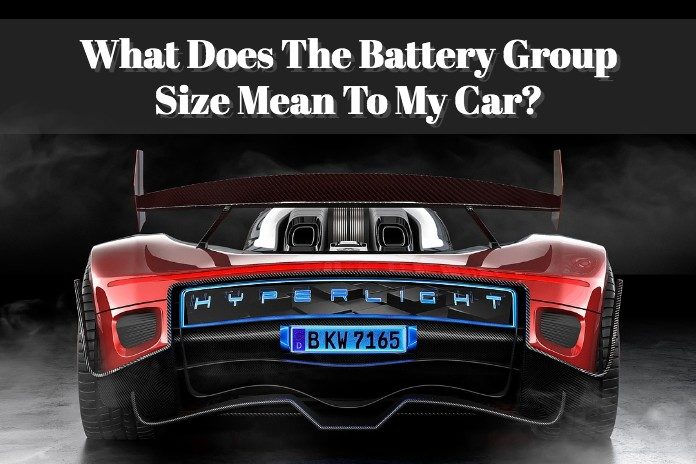
Buying a new battery for your car can be overwhelming, especially for the first-timers. There are a lot of things you have got to consider before arriving at the perfect battery. The brand, for instance, capacity and price, are some of the most common things you should have at your fingertips while shopping.
However, there is the battery’s group size, a thing that manufacturers, as well as, your mechanic will tell you to have at the back of your head.
You may ask, what does the battery’s group size mean to my car? The battery’s group size is an industry’s standard, which describes the batteries’ physical measurements. That includes; the length, width and the height of the battery you require.
Knowing the group size of your battery is, therefore, vital as it makes the buying process easy. You don’t need a tape measure to take the measurements. As long as you have got the number, there will be fewer hustles along.
The group size is essential. Apart from choosing the best battery brands in the market, you must make it your duty to consider the right group in the market. From an expert’s perspective, the battery group is what defines the location of either the negative or the positive posts of the battery. In other words, it describes the polarity.
What If You Go With the Wrong Size?
As said earlier, the size of your battery is essential. As your mechanic will tell you, it should be compared to the size of your car. So, what will happen if you fail to get the right size?
First thing, you must know that the larger the battery group size, the bigger the power supply. Therefore, if you go for a smaller scale, it means that you may end up limiting the potential of your car. Modern cars come fully equipped with high-end features. Thus, if you pick a smaller size, you may miss all these features.
By now, you understand that these battery groups define the battery’s physical dimensions? Well, that’s one thing that you should stick in your head. Car manufacturers depend on the battery groups to design the battery compartments and tray. So, if you go for a wrong group size, it means that that the battery will either be small or large for your car’s battery area.
What Happens If You Go for a Bigger Size?
If it’s large, you will be forced to get the right size. Sometimes, the battery may fit in the area based on the length and width. Don’t be among the drivers who ignore the height as it’s crucial as well.
Remember, a battery with a more significant height may get into contact with the hood of your car, which is metal. The contact may create sparks or even short all your electrical components. The worst can happen if the contact leads to a fire. You have seen vehicles burn entirely because of a battery. That’s enough reason why you can never undermine the size of the cell.
What Happens If You Go for a Smaller Size?
This is where the major problem lies because many people go ahead and install the battery. Well, the small battery may work as per the expectation, but it means that you won’t be getting sufficient power as prescribed by the manufacturer. Also, the fact that the battery is small in size means that it won’t fit in the battery area. Therefore, you may start experiencing things such as lose terminals, which can cause shorting as well.
Besides, a loose battery is prone to physical damages, which may result from the battery hitting every end of your battery compartment. The small battery group can as well get into contact with other components of the engine and hence cause a major catastrophe. Therefore, you can never ignore the battery group size, whether it’s small or big.
Common Battery Group Sizes
Currently, it’s a requirement by the Battery Council International (BCI) for every manufacturer to include the battery group sizes on their products. The sizes may be in the form of letters, numbers, or a combination of both. The group size of your battery can be found either at the top or on the side of the cell.
Besides, the number can be written in the car’s manual or printed in the battery area. It’s upon you, as a driver, to have these numbers at the back of your head. The most common battery group sizes include:
• Group 24 and 25 – these are the most common battery group sizes that you can find in the market. The high number is because they are designed for lightweight cars. As you know, lightweight vehicles are the majority when compared to the other types of vehicles.
• Group 34 and 35 – these groups are also common as they include batteries designed for lightweight vehicles. But, the group size targets cars that consume much energy, such as Chrysler and some Nissan and Toyota vehicle models.
• Group 65 and 75 – also another typical battery group size as it includes batteries for cars that ask for the distribution of high-end energy.
Tips on How to Confirm the Right Battery Group
By now, you understand what battery group size is and how important it’s for your car is. Now the big question is, “how can you tell the right size of your battery?” The first thing you should ook at is the stickers on the old battery that you are replacing. It should have info about the battery, and there you should have an idea of the size you need.
Also, you can consult with your mechanic or auto supplier. These individuals know the right size of the battery based on the model of the car. You can as well check with your car’s manual or manufacturer. If it’s your first car, you can confirm as they have things such as the battery’s group size included in their specs.






